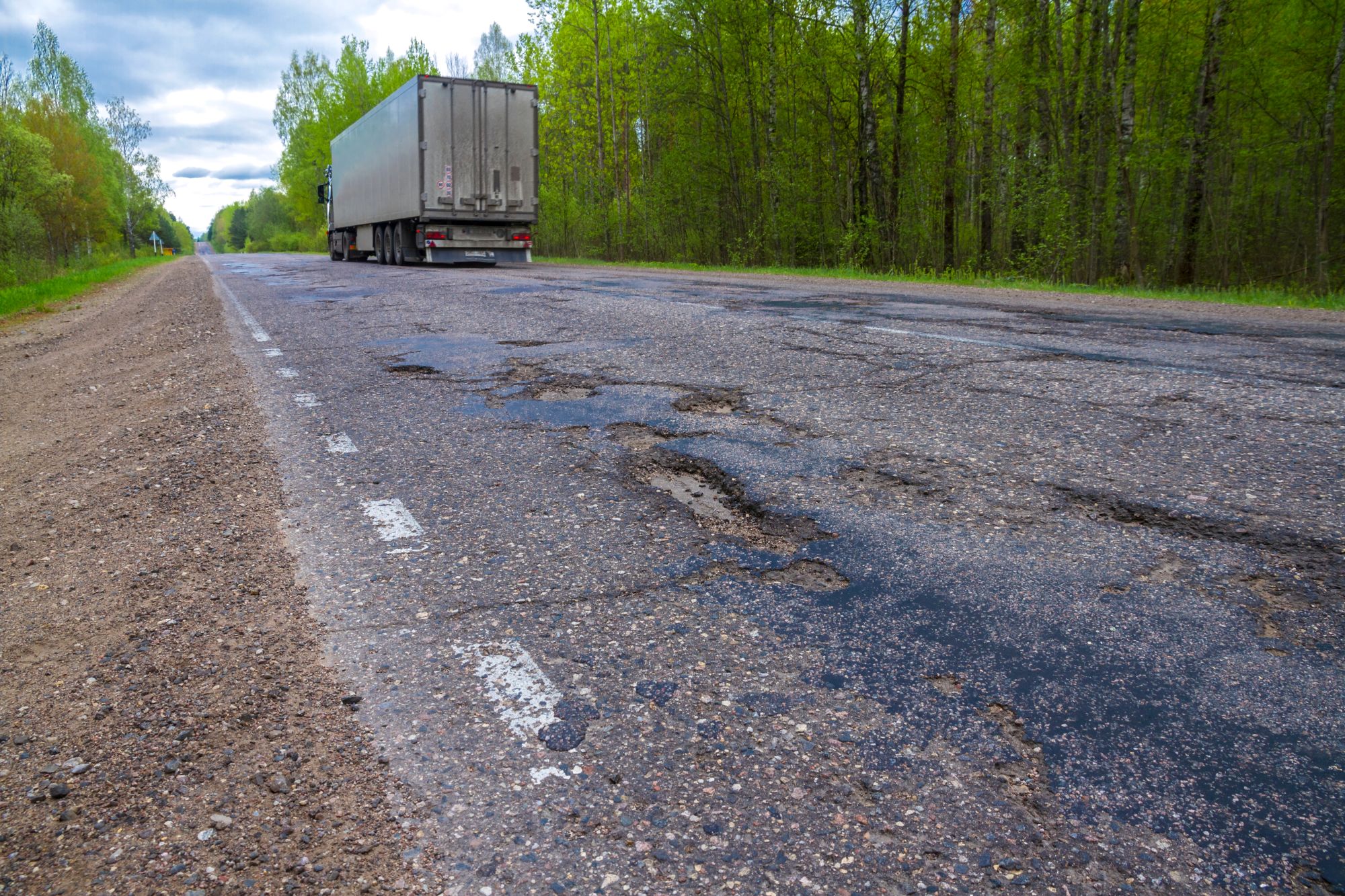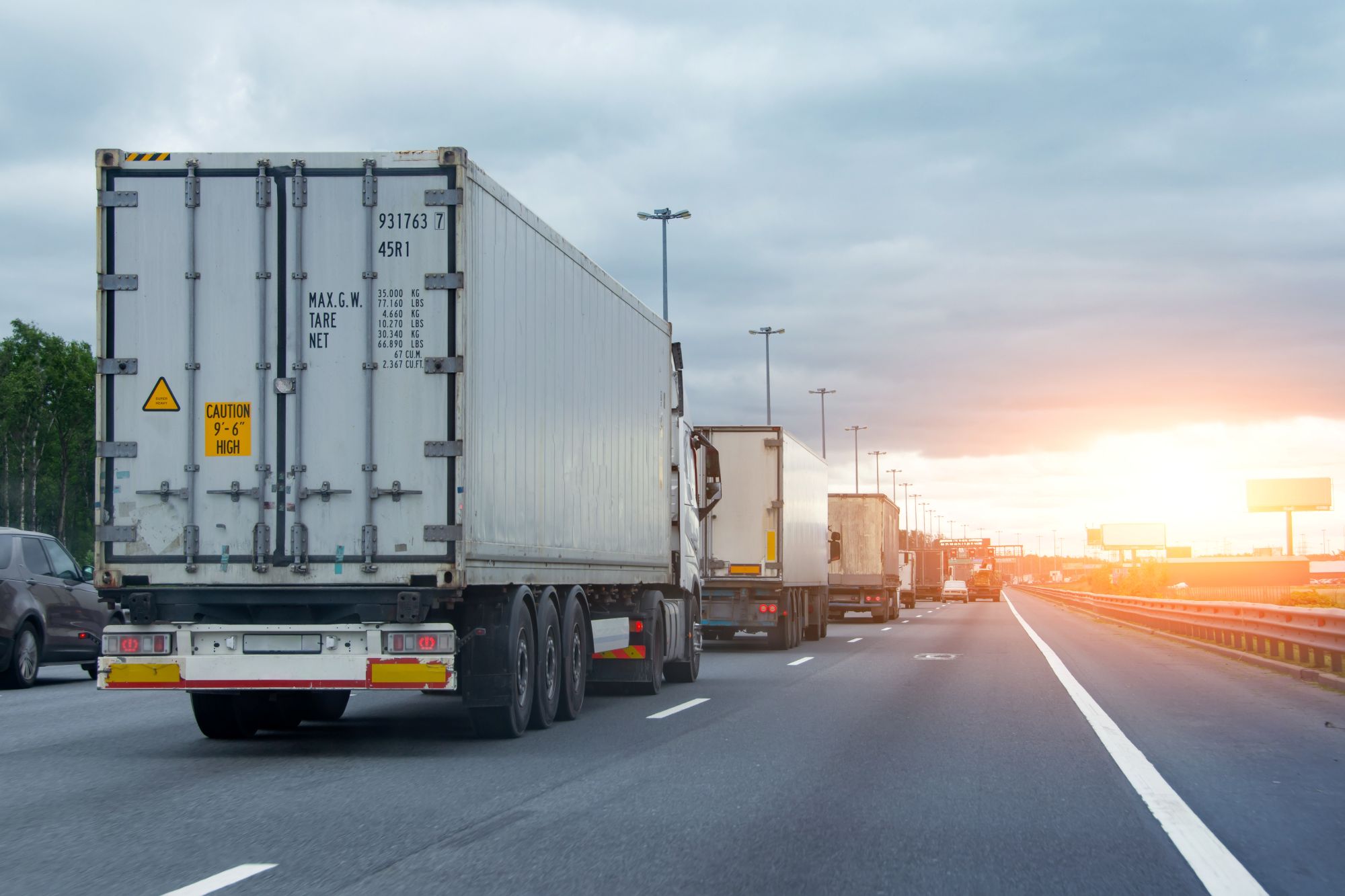
Guest
Come i finanziamenti per le infrastrutture del Regno Unito potrebbero avere un impatto sull'industria della mobilità
Creato: 02/07/2025
•
Aggiornato: 03/07/2025
Dopo anni di investimenti discontinui e di congestione crescente, il governo britannico si è impegnato a spendere più di 700 miliardi di sterline in infrastrutture nel prossimo decennio, gran parte dei quali destinati alle strade del Paese. Dai nuovi corridoi per il trasporto merci ai sistemi digitali all'avanguardia per il traffico, l'impatto della Strategia decennale per le infrastrutture sui conducenti commerciali e sul settore della mobilità in generale potrebbe essere trasformativo.
Le strade raggiungono il punto di rottura
Le strade sono solo una parte del mix di trasporti del Regno Unito, ma trasportano la stragrande maggioranza delle merci. Secondo i dati del Governo, l'81% del trasporto merci nazionale e il 75% delle importazioni e delle esportazioni si muovono su strada, rendendola la spina dorsale della logistica e dell'economia del Regno Unito.
E, nonostante costituisca poco più del 2% della rete stradale del Regno Unito in termini di lunghezza, la Rete Stradale Strategica (SRN) trasporta il 34% di tutti i viaggi su strada, comprese molte delle tratte più sensibili ai tempi di percorrenza e ad alto volume di merci. Per gli autisti che le utilizzano, le loro condizioni e capacità hanno un impatto diretto sulla sicurezza, l'efficienza e le prestazioni di consegna.
Tuttavia, i dati del Road Condition Index (RCI) mostrano che circa 24.500 miglia - più di una ogni 10 miglia - della rete in Inghilterra e Galles probabilmente richiederanno manutenzione nei prossimi 12 mesi.
Una serie di recenti chiusure d'emergenza di ponti ha ulteriormente evidenziato la vulnerabilità della rete. In alcune aree, le strutture di supporto incrinate e il cemento vecchio di decenni hanno creato condizioni pericolose per tutti gli utenti della strada, in particolare per i mezzi pesanti, che spesso sono i primi a subire limitazioni di peso o deviazioni forzate.
Il governo ha risposto con un nuovo fondo da 1 miliardo di sterline per riparare e ricostruire i ponti, gli attraversamenti e i cavalcavia deteriorati nell'ambito della sua strategia infrastrutturale. Si tratta di un passo gradito, che riflette la crescente pressione del settore. Per gli autisti professionisti potrebbe significare meno deviazioni, meno restrizioni improvvise e meno tempo perso per infrastrutture non adatte alla logistica moderna.
Ma la sicurezza non è solo evitare guasti catastrofici. Si tratta anche di resilienza a lungo termine, per garantire che strade, ponti e piazzole di sosta siano sottoposti a una manutenzione adeguata prima che diventino un pericolo. Questa rinnovata attenzione alla manutenzione indica che la manutenzione delle strade può finalmente iniziare ad essere all'altezza della scala, delle dimensioni e della velocità dei veicoli che ne dipendono.

Il problema delle buche
Mentre i progetti di alto profilo dominano gli annunci, spesso sono le condizioni quotidiane del manto stradale ad avere il maggiore impatto sugli automobilisti. Per i trasportatori, le buche sono più di un fastidio: sono un pericolo persistente per la sicurezza e un onere costoso.
L'esposizione ripetuta a superfici irregolari aumenta l'usura dei mezzi pesanti, danneggia i pneumatici e le sospensioni e contribuisce all'affaticamento del conducente. In alcuni casi, i danni causati dalle buche hanno costretto i veicoli a uscire di strada per riparazioni di emergenza, interrompendo le consegne e incidendo sugli accordi sui livelli di servizio.
Per gli automobilisti, i rischi sono personali. Cercare di evitare le buche, soprattutto su strade strette o trafficate, può portare a manovre pericolose. Se a ciò si aggiungono il maltempo, l'illuminazione limitata o i tempi stretti di consegna, la posta in gioco aumenta.
Nell'ambito del Piano per il Cambiamento, il governo ha stanziato 1,6 miliardi di sterline per migliorare le infrastrutture locali, tra cui buche, superfici screpolate e carreggiate usurate. L'obiettivo è quello di portare le strade a uno standard più sicuro e affidabile, in particolare sulle tratte ad alta intensità di traffico.
Non risolverà il problema da un giorno all'altro, ma segna un cambiamento nelle priorità, riconoscendo che il benessere dei conducenti inizia dalle cose basilari e che un viaggio sicuro e confortevole dipende da strade ben tenute.
Per le flotte, i vantaggi includono una riduzione delle riparazioni non programmate, delle richieste di risarcimento assicurativo e dei tempi di fermo macchina. Per gli autisti, significa meno scosse, meno stress e una preoccupazione in meno durante un lungo turno.
Una rete affidabile
Il benessere degli autisti è al centro della conversazione sui trasporti moderni. Orari prolungati, ritardi negli orari e strutture inadeguate hanno fatto sentire il loro peso. Ma gli ultimi piani del governo offrono la speranza di una rete più sicura e meglio collegata.
In tutto il Regno Unito, le strutture per gli autisti hanno faticato a tenere il passo con la domanda. I parcheggi sono spesso limitati, i servizi sono insufficienti e molte aree di sosta non offrono comfort e sicurezza, soprattutto per le operazioni a lungo raggio. Ecco perché il governo sta anche [migliorando l'ambiente di guida] (https://www.gov.uk/government/news/more-than-14-million-in-joint-government-and-industry-funding-to-boost-innovation-and-working-conditions-in-freight): parcheggi più sicuri, migliori servizi di assistenza e riforme della pianificazione per accelerare lo sviluppo di nuovi siti.
Allo stesso tempo, si stanno accelerando gli investimenti nei centri di ricarica e rifornimento per i camion elettrici e a idrogeno. Moto, ad esempio, si è impegnata a installare oltre 300 caricabatterie elettrici per mezzi pesanti in 23 punti autostradali, mentre Ashford Truckstop si sta trasformando in un importante centro di ricarica per il trasporto merci attraverso la Manica. Queste strutture non si limitano a mantenere i veicoli in movimento, ma offrono ai conducenti luoghi sicuri e ben attrezzati per riposare e ricaricarsi.
Se i vostri autisti sono alla ricerca di un posto sicuro dove fermarsi, la nostra app intruck permette loro di identificare e prenotare le aree di sosta nel Regno Unito e in Europa. Per saperne di più e scaricarla qui

Il costo della congestione
Gli ingorghi, i percorsi imprevedibili e la pressione per rispettare le scadenze di consegna contribuiscono allo stress e all'affaticamento degli autisti e rendono la strada un luogo più pericoloso.
Importanti aggiornamenti infrastrutturali come il Lower Thames Crossing, il raddoppio della A66 e i miglioramenti della M60 Simister Island sono stati progettati per ridurre la congestione e il rischio di incidenti in alcuni dei punti di snodo più noti del Regno Unito.
Inoltre, c'è ancora una spinta a introdurre strumenti digitali che supportino viaggi più sicuri e fluidi. Gli avvisi sul traffico in tempo reale, i sistemi di rilevamento intelligenti e una migliore gestione del traffico aiuteranno i gestori delle flotte e i conducenti a reagire rapidamente alle interruzioni e a deviare il percorso dove necessario.
Il programma [National Highways' Digital Roads programme] (https://nationalhighways.co.uk/our-work/digital-data-and-technology/digital-roads/) sta già gettando le basi, con infrastrutture intelligenti in grado di rilevare i pericoli in anticipo, gestire i flussi di traffico in modo più intelligente e comunicare aggiornamenti più chiari e in tempo reale.
Cosa significa questo per la mobilità?
Un passo avanti per la mobilità e il benessere degli automobilisti. L'impegno nazionale coordinato per affrontare il ritardo infrastrutturale del Regno Unito e per modernizzare le strade in modo da avvantaggiare gli automobilisti che vi fanno maggiore affidamento.
Il vero banco di prova sarà la realizzazione. Per trasformare i finanziamenti in miglioramenti tangibili sarà necessario ascoltare gli automobilisti, imparare dall'esperienza in prima linea e misurare il successo in base alla percezione delle strade, non solo al loro costo.
"Questa nuova ondata di investimenti non riguarda solo la riduzione dei tempi di percorrenza", afferma Stuart Willetts, responsabile dello sviluppo commerciale nel Regno Unito di SNAP. "Si tratta di costruire una rete di trasporti che favorisca il benessere dei conducenti, l'efficienza operativa e la transizione verso una mobilità pulita. Non vediamo l'ora di vedere i risultati".
Volete vedere come si sta evolvendo la mobilità nel luogo in cui vi trovate?
Utilizzate la mappa SNAP per trovare servizi e soluzioni vicino a voi, indipendentemente dalla strada che state percorrendo.



